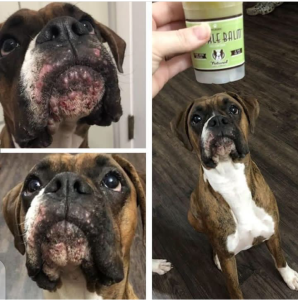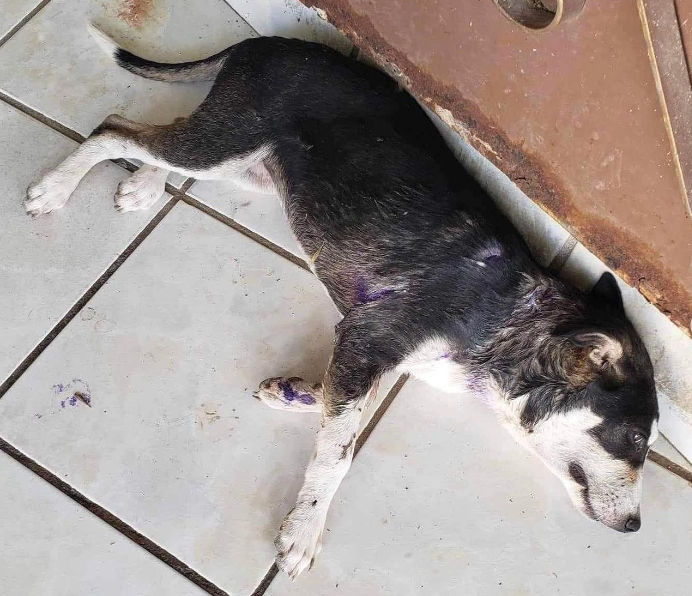Types of Dog Skin Infections
Dog skin infections are a common problem. Various factors, including bacteria, fungi, parasites, and allergies, can cause them. Some skin infections are relatively mild and can be treated at home, while others are more serious and require veterinary care.
Bacterial Skin Infections
Bacterial skin infections are the most common type of skin infection in dogs. Various bacteria, including Staphylococcus pseudintermedius, Streptococcus canis, and Pseudomonas aeruginosa, can cause them. Bacterial skin infections can occur anywhere on the body but are most common on the face, feet, and ears.
Symptoms of bacterial skin infections in dogs include:
- Redness, inflammation, and swelling
- Itching and scratching
- Hair loss
- Sores and scabs
- Discharge from the skin
- Foul odor
Bacterial skin infections can be treated with antibiotics. Antibiotics can be administered orally, topically, or both. In some cases, dogs may also need to be bathed with a medicated shampoo.
Fungal Skin Infections
Fungi, such as Malassezia pachydermatis, cause fungal skin infections. Fungal skin infections are most common in dogs with allergies or other skin conditions. They can also occur in dogs with warm, moist skin folds.
Symptoms of fungal skin infections in dogs include:
- Itching and scratching
- Hair loss
- Greasy, scaly skin
- Redness and inflammation
- Foul odor
Fungal skin infections can be treated with antifungal shampoos, creams, or oral medications.
Parasitic Skin Infections
Parasites, such as mites and fleas, cause parasitic skin infections. Mites can burrow into the skin, causing itching, hair loss, and sores. Fleas can also cause skin irritation and allergic reactions.
Symptoms of parasitic skin infections in dogs include:
- Itching and scratching
- Hair loss
- Sores and scabs
- Redness and inflammation
- Fleas or mites on the skin
Parasitic skin infections can be treated with various medications, including flea and tick prevention products, topical treatments, and oral drugs.
Allergic Skin Infections
Allergies cause allergic skin infections to things like pollen, dust mites, and food. When dogs are exposed to an allergen, they release histamine, which causes inflammation and itching. Allergic skin infections can be challenging to treat because multiple allergens often cause them.
Symptoms of allergic skin infections in dogs include:
- Itching and scratching
- Hair loss
- Redness and inflammation
- Sores and scabs
Allergic skin infections can be treated with various medications, including antihistamines, corticosteroids, and immunosuppressants. In some cases, dogs may also need a hypoallergenic diet.
Diagnosing and Treating Dog Skin Infections
Once the veterinarian has diagnosed the type of skin infection, they will recommend a treatment plan. Treatment may involve medications, bathing, and dietary changes.
Tips for Preventing Dog Skin Infections
There are several things you can do to help prevent dog skin infections:
- Keep your dog’s skin clean and dry.
- Bathe your dog regularly, especially if they spend much time outdoors.
- Use a flea and tick prevention product year-round.
- Feed your dog a high-quality diet.
- Groom your dog regularly to remove loose hair and mats.
- Check your dog’s skin regularly for any signs of infection.
If you notice any signs of a skin infection on your dog, you must take them to the veterinarian immediately. With early diagnosis and treatment, most dog skin infections can be cleared up quickly and easily.
Here are some additional tips for preventing and treating specific types of dog skin infections:
Bacterial skin infections:
- Avoid over-bathing your dog, as this can dry out their skin and make it more susceptible to disease.
- Use a mild shampoo when bathing your dog, and avoid using harsh soaps or detergents.
- Dry your dog thoroughly after bathing, especially in the folds of their skin.
- Avoid exposing your dog to wet or muddy environments.
Fungal skin infections:
- Keep your dog’s skin clean and dry.
- Bathe your dog with an antifungal shampoo regularly.
- Avoid exposing your dog to warm, moist environments.
- Treat any underlying skin conditions, such as allergies, that may contribute to the fungal infection.
Parasitic skin infections:
- Use a flea and tick prevention product year-round.
- Check your dog’s skin regularly for fleas and mites.
- Treat any flea or mite infestations promptly.



